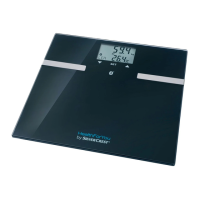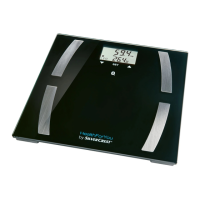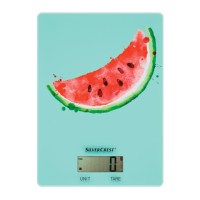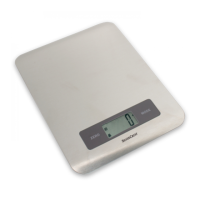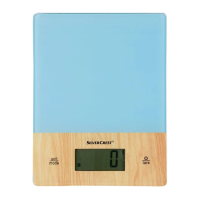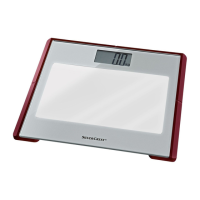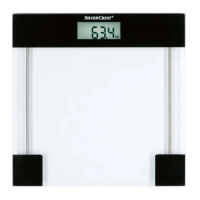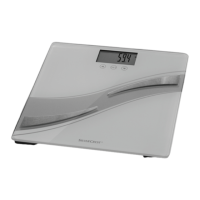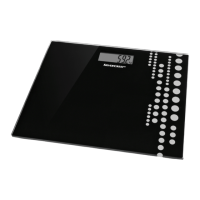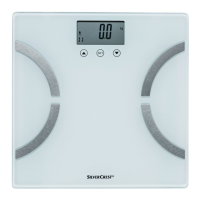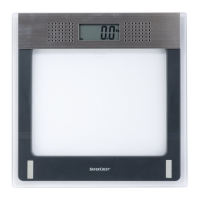15 GB/IE/NI
Evaluating Results / Troubleshooting
Note: Do not confuse bone mass with bone density.
The bone density can only be determined with
medical tests (e.g. computer tomography, ultra-
sound). These diagnostic scales therefore cannot
be used to draw conclusions on changes in the
bones and bone strength (e.g. osteoporosis).
BMR
The basal metabolic rate (BMR) is the amount of
energy the body requires at rest to maintain its ba-
sic functions (e.g. 24 hours of bed rest). This value
is substantially influenced by weight, height and
age.
The diagnostic scales shows the unit of measure
kcal /day calculated based on the scientifically
recognised Harris-Benedict equation.
This amount of energy is absolutely required by
your body and must be taken in through the diet.
Consuming less energy for extended periods may
be harmful to your health.
AMR
The active metabolic rate (AMR) is the amount of
energy the body burns each day through activity. A
person‘s energy requirement increases with activity
and is determined by the diagnostic scales using
the activity level specified (1– 5).
To maintain your current weight you will need to
consume the amount of energy burnt through food
and beverages.
When consuming less energy than burnt over an
extended period the body will essentially take the
difference from fat stores, resulting in weight loss.
On the other hand, when consuming more energy
than the calculated active metabolic rate (AMR)
over an extended period the body will not be able
to burn the excess energy and store it as fat, result-
ing in weight gain.
How Time Affects Results
Please note, only the long-term trend is important.
Sudden weight changes within a few days are
typically caused by loss of fluid.
The results are interpreted based on changes in the
total weight and the body fat and water percentage
and the muscle mass along with the amount of time
over which these occurred. Sudden changes within
days are must be distinguished from medium term
changes (within weeks) and long-term changes
(months).
As a general rule, sudden weight changes are
almost exclusively caused by changes in the water
percentage, whilst medium- and long-term changes
may also be due to changes in the percentage of
fat and muscle.
- If the weight suddenly changes but the body
fat percentage increases or remains steady,
you have merely lost water – e.g. after exer-
cising, using the sauna or a diet aimed at
rapid weight loss.
- If the weight increases in the medium term
and the body fat percentage decreases or
remains steady, on the other hand, you may
have built important muscle mass.
- If the weight and body fat percentage de-
crease at the same time, your diet is working
– you are losing fat.
- Your diet will ideally be accompanied with
physical activity, fitness or weight training. You
can then increase your muscle mass in the
medium term.
- However, do not add body fat and water per-
centages or muscle mass (muscle tissue also
contains water).
Troubleshooting
= Error/Display
= Cause
= Solution
= The LC-display
1
reads „- - - „.
= Unknown value - outside the user assignment
limit or unable to clearly identify a user.
Evaluating Results

